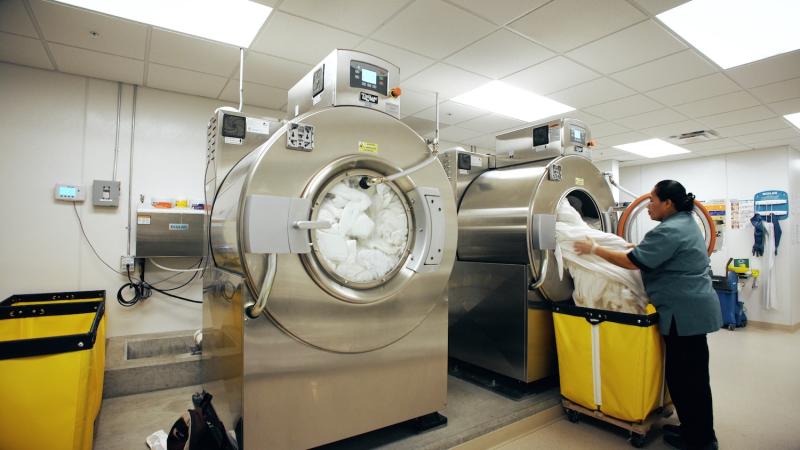Developments at laundry manufacturing companies for 2022 have given hotels ways to improve their operations and reduce labor, utility and linen replacement costs. Guests increasingly want assurances their rooms and linens are as clean as possible, especially in these pandemic times. This means back-of-house activities such as laundry have gained front-and-center status.
Some of the best on-premises laundries have leveraged the public’s increased emphasis on hygiene and sustainability to invest in industrial-scale equipment and plans to facilitate the best clean, said Joe Fleming, national sales manager at Yamamoto North America.
“Even though they operate on a much smaller scale they’ve adopted new plans to mimic controls that are used in central laundries,” Fleming said. “For example, changing the flow of soiled linens to prevent cross-contamination or storing clean linens in an isolated room away from incoming dirty carts.”
Yamamoto has standardized steam injection on all of its units so that operators can achieve industrial-strength cleaning temperatures. High temperatures speed up the process of sanitation, increase the effectiveness of most detergents and overall give the laundry operator better results, according to Fleming. “This is not new technology, but is virtually always an extra cost when purchasing equipment,” he said. “Yamamoto has chosen to standardize this without any additional price adjustment simply to help combat the struggles faced by our customers.”
Over-dry prevention technology has been particularly important in helping hoteliers trim costs and drive efficiency, said Randy Radtke, content and media relations manager at Alliance Laundry Systems. “Quite simply, over-drying is a problem in on-premises laundries,” he said. “Utilizing the over-dry prevention feature, loads are dried to a set moisture level and no further—conserving energy and staff time while maximizing throughput and extending linen life.”

With the staffing shortage occurring in hotels these days, there are some strategies and techniques hoteliers can adopt to ease the workload strain.
Fleming suggested that hoteliers keep their laundry providers involved during the building and planning stages of any projects. “That way you don’t risk undersizing a room or equipment to a value-engineering exercise,” he said. “Especially if you have limited labor access you want to make sure the strain isn’t placed on the employee or the equipment; their performance is finite.”
If a hotelier is dealing with a retool of an existing facility, the answer remains the same, Fleming continued. “Be open about the struggles you’ve encountered and listen to your vendor's advice,” he said. “They are aware of what trends and equipment are helping the hotels in your area.”
Radtke said that now is the time to focus on fundamentals. “Make sure staff is well-trained on what full capacity on washer-extractors and tumble dryers looks like,” he said. “Underloading machines wastes time and resources—in addition to impacting quality.”
Radtke also suggested that utilizing delayed start capabilities on washer-extractors can be another valuable feature to not only get a jump on the day, but enable managers to stagger staffing, which can be vital when dealing with staff shortages.
